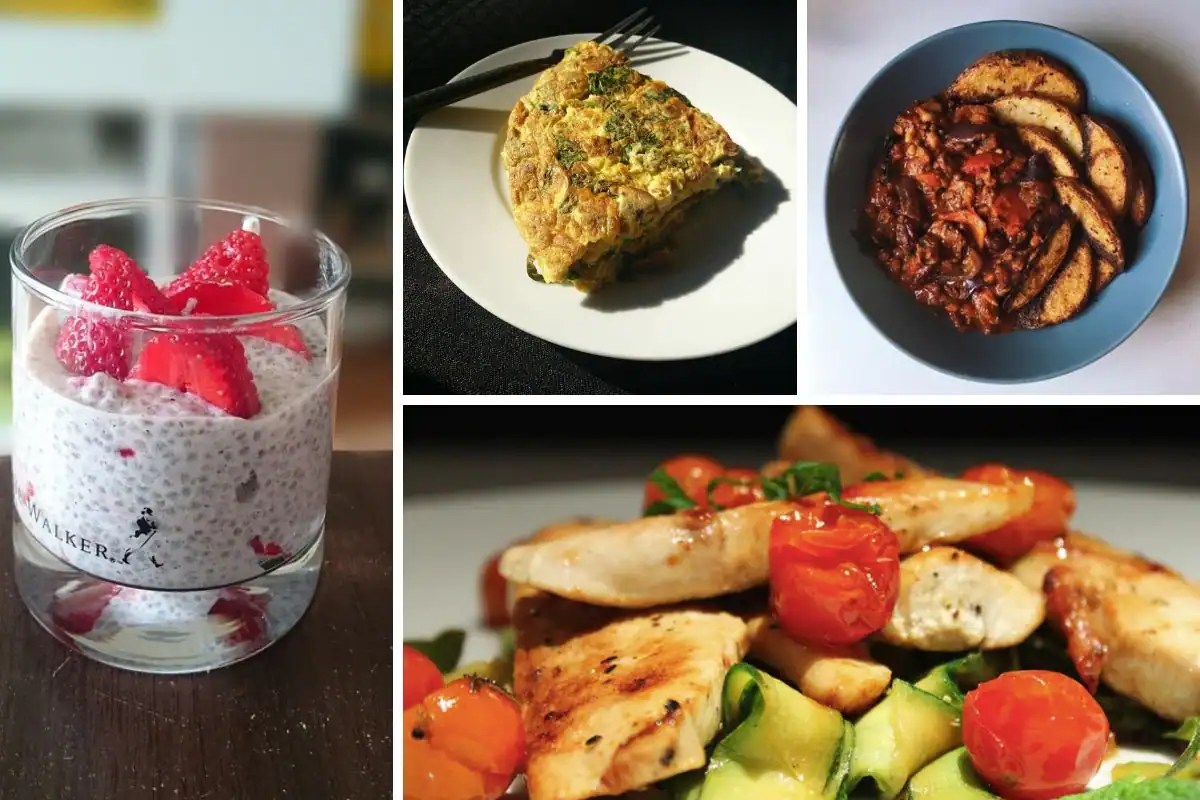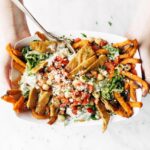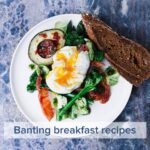Embark on a culinary journey to shed those extra pounds with our curated collection of 20 delectable Banting recipes. This guide unveils the secrets to effortless weight loss through delicious, low-carb meals that tantalize your taste buds while nourishing your body. Prepare to discover a world of flavourful possibilities, from vibrant breakfasts bursting with fresh ingredients to hearty dinners that satisfy without sacrificing your health goals. We’ll explore the fundamental principles of the Banting diet, providing clear guidelines and practical tips to ensure your success.
This comprehensive guide delves into the heart of Banting, detailing its core principles, benefits, and essential dietary guidelines. We’ll equip you with 20 meticulously crafted recipes – ten for breakfast and brunch, and ten for lunch and dinner – each designed to be both simple to prepare and incredibly satisfying. Learn how to adapt your favorite traditional dishes to fit the Banting lifestyle, overcoming common challenges with our expert tips and substitutions. Finally, we’ll help you craft a personalized weekly meal plan, making healthy eating a sustainable and enjoyable part of your life.
Introduction to Banting Recipes for Weight Loss

The Banting diet, inspired by the experiences of William Banting in the 19th century, is a low-carbohydrate, high-fat (LCHF) eating plan designed to promote weight loss and improve overall health. It emphasizes whole, unprocessed foods while significantly restricting carbohydrate intake. This approach focuses on shifting the body’s primary fuel source from carbohydrates to fats, triggering a metabolic shift that can lead to effective and sustainable weight management.
The Banting diet offers several potential benefits for weight loss. By reducing carbohydrate consumption, it lowers insulin levels, which can curb appetite and reduce cravings. The high-fat content promotes satiety, keeping you feeling full and satisfied for longer periods, making it easier to adhere to calorie goals. Furthermore, the diet encourages the consumption of nutrient-rich foods, providing essential vitamins and minerals crucial for overall well-being during the weight loss process. Many followers report significant weight loss, improved energy levels, and reduced symptoms associated with metabolic disorders.
Banting dietary restrictions and guidelines primarily revolve around limiting carbohydrate intake. Sugary drinks, processed foods, grains (bread, pasta, rice), and starchy vegetables (potatoes, corn) are significantly restricted or eliminated. The focus shifts to high-fat sources such as avocados, nuts, seeds, olive oil, and fatty fish. Lean protein sources like chicken, fish, and eggs are also encouraged. The diet promotes mindful eating, emphasizing whole, unprocessed foods and portion control. While individual needs may vary, a typical Banting meal plan would consist of a substantial portion of healthy fats and protein, with a small amount of non-starchy vegetables. Strict adherence to these guidelines is key to achieving the desired weight loss results.
Banting Diet Principles
The core principle of the Banting diet lies in understanding the body’s metabolic response to different macronutrients. By reducing carbohydrate intake, the body switches from primarily burning glucose (from carbs) to burning stored fat for energy, a process known as ketosis. This metabolic shift is the foundation of the diet’s weight loss mechanism. The diet emphasizes consuming foods that are naturally low in carbohydrates and high in healthy fats and protein, providing sustained energy and satiety. The visual representation of a Banting plate would show a large portion filled with healthy fats and protein, a smaller portion with non-starchy vegetables, and a minimal amount of carbohydrates. Imagine a plate overflowing with vibrant green leafy vegetables, a generous portion of grilled salmon glistening with olive oil, and a small side of avocado slices. This visual represents the balanced macronutrient ratio crucial for successful Banting.
Key Dietary Restrictions
The Banting diet requires a conscious effort to avoid certain food groups. High-carbohydrate foods like bread, pasta, rice, sugary cereals, and most fruits (except berries in moderation) are strictly limited or excluded. Processed foods, sugary drinks, and refined carbohydrates are also to be avoided, as they can hinder weight loss progress and negate the benefits of the diet. This necessitates careful meal planning and preparation, emphasizing whole, unprocessed foods and mindful portion control. Understanding food labels and making informed choices about ingredient lists becomes crucial for successful Banting. For example, a person following the Banting diet would choose to eat a handful of almonds instead of a candy bar, opting for a grilled chicken salad with olive oil dressing instead of a pasta dish.
Creating a Weekly Banting Meal Plan
Crafting a successful Banting weekly meal plan requires careful consideration of macronutrient balance, individual dietary needs, and a commitment to delicious, satisfying meals. A well-structured plan ensures you stay on track with your weight loss goals while enjoying a variety of flavors and textures. This section will guide you through creating both a sample plan and a personalized approach.
Sample Weekly Banting Meal Plan
This sample plan incorporates a variety of previously mentioned Banting recipes (assuming these recipes have been previously defined in the document). Remember to adjust portion sizes based on your individual caloric needs and activity levels.
| Day | Breakfast | Lunch | Dinner |
|---|---|---|---|
| Monday | Coconut Flour Pancakes with Berries and Nuts | Large Salad with Grilled Chicken and Avocado | Salmon with Roasted Asparagus and Cauliflower Mash |
| Tuesday | Scrambled Eggs with Spinach and Mushrooms | Leftover Salmon and Asparagus | Chicken Stir-fry with Broccoli and Peppers (using coconut aminos) |
| Wednesday | Chia Seed Pudding with Coconut Milk and Berries | Tuna Salad (made with mayonnaise) Lettuce Wraps | Beef and Cabbage Stir-fry |
| Thursday | Banting Smoothie (coconut milk, spinach, protein powder) | Leftover Beef and Cabbage Stir-fry | Pork Chops with Green Beans and Zucchini |
| Friday | Omelette with Cheese and Peppers | Salad with leftover pork chops | Chicken and Vegetable Skewers (grilled) |
| Saturday | Breakfast Sausage with Avocado | Large mixed green salad with grilled shrimp | Steak with a side of roasted Brussels sprouts |
| Sunday | Banting Pancakes (with sugar-free syrup) | Leftover Steak and Brussels sprouts | Roast Chicken with Roasted Root Vegetables (carrots, parsnips) |
Creating a Personalized Banting Meal Plan
Developing a personalized Banting meal plan involves understanding your individual needs and preferences. Consider factors like your activity level, dietary restrictions, and personal taste. A detailed food diary can be incredibly helpful in tracking your intake and identifying areas for improvement.
- Assess your caloric needs: Use an online calculator or consult a nutritionist to determine your daily caloric needs based on your age, gender, weight, height, and activity level. This will guide your portion sizes.
- Track your macronutrients: Keep a food diary to monitor your intake of fat, protein, and carbohydrates. Ensure you are meeting your daily protein goals and consuming healthy fats while limiting net carbs.
- Choose recipes you enjoy: Select Banting recipes that appeal to your palate. Variety is key to maintaining adherence to the plan.
- Plan your meals: Create a weekly meal plan that incorporates a variety of foods to ensure you receive a wide range of nutrients.
- Adjust as needed: Regularly review your plan and make adjustments based on your progress and any changes in your lifestyle or preferences.
Banting Meal Prepping and Storage Techniques
Efficient meal preparation is crucial for sticking to a Banting diet. Preparing meals in advance saves time and prevents impulsive unhealthy choices.
- Cook in bulk: Prepare large batches of proteins (chicken, beef, fish) and vegetables. This makes assembling meals much quicker during the week.
- Utilize leftovers creatively: Transform leftover roasted chicken into a salad or soup. Repurpose vegetables into different meals throughout the week.
- Proper storage: Store cooked foods in airtight containers in the refrigerator for up to 3-4 days. Freeze larger portions for longer storage.
- Invest in good quality containers: Use glass or BPA-free plastic containers to ensure food safety and freshness.
Unlocking the power of the Banting diet doesn’t have to be daunting. With our collection of 20 easy-to-follow recipes and practical advice, you’ll discover a path to weight loss that’s both delicious and sustainable. From the vibrant colors of a perfectly balanced Banting breakfast plate to the comforting warmth of a satisfying Banting dinner, this guide provides a holistic approach to healthy eating, empowering you to take control of your well-being and achieve your weight loss goals. Embrace the journey, savor the flavors, and enjoy the transformative power of Banting.
Clarifying Questions
What are the main differences between the Banting and Keto diets?
While both are low-carb, Banting emphasizes whole, unprocessed foods, often with a slightly higher fat intake than some keto approaches. Keto can be more restrictive.
Can I still eat fruit on the Banting diet?
Yes, but in moderation. Berries are generally preferred due to their lower sugar content.
How much weight can I expect to lose on the Banting diet?
Weight loss varies depending on individual factors. Consistent adherence to the diet usually results in gradual, sustainable weight loss.
Are there any potential downsides to the Banting diet?
Potential downsides include nutrient deficiencies if not planned carefully, and the need for gradual introduction to avoid initial side effects like “keto flu”. Consult your doctor before starting any new diet.


